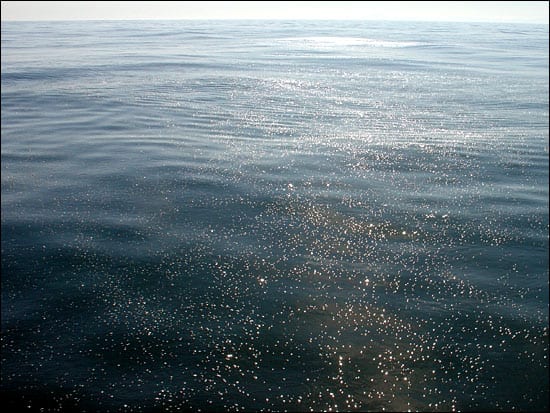A Natural Petroleum Spring
July 1, 2005
Bubbles stream from vents surrounding misshapen cones formed by thick liquid oozing from the sea floor. It may sound like a hydrothermal vent field near a mid-ocean ridge, but these vents are located in shallow water, only a kilometer (about a half mile) off the coast of Santa Barbara, California. This isn’t the usual volcanic output of gases and molten rock, either; this eruption is crude oil and the methane gas often associated with it, a phenomenon known as an oil seepa natural petroleum spring that has been occurring for thousands of years. Such seeps leak an astonishing amount of the oil discharged into the environment each yearabout 47 percent of the total volume of oil introduced into the environment. At the Santa Barbara seeps, about 5,000 gallons leak every day. Most of the oil is naturally degraded by microbes and disappears before it reaches the surface, with the remaining oil appearing as tar balls on the beach. For WHOI geochemists and colleagues at the University of California at Sanata Barbara, the seeps provide a natural laboratory for studying the fate and effects of oil in the marine environment. In particular, natural populations of microbes in the ocean can eat or biodegrade signifi cant amounts of the oil. Researchers hope that an understanding of these natural processes can be applied to the clean-up of future oil spills and the remediation of contaminated sites.

